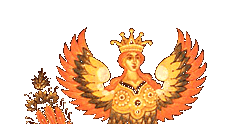The most notable figure of Russian academism (of the age of Realism), Konstantin Makovskiy painted situational scenes from the daily life of ancient Russia. Along with the other painters involved in the "Wanderers" Movement, he painted common people without any social commentary. He was also well known for his myriad of portraits and images in which he artistically embodied characteristic representations of "beautiful life." Though not always in favor with critics, his popularity extended all the way to the top of Russia's nobility, as he was Tsar Alexander III's favorite artist. His painting "Children, Hiding from Thunderstorms" is currently displayed in the Tretyakov Gallery. His younger brother, Vladimir Makovskiy, was also an established genre artist. The Tretyakov Gallery also houses one of his works, "Collapse of the Bank." Konstantin's painting "The Boyar's Wedding" is part of an extensive collection of Russian works held in the Hillwood Museum and Gardens in Washington, D.C., which was founded by Marjorie Merriweather Post.
As described on the Hillwood Museum web site, this large (93" x 154") painting depicts one of the most important social and political events of old Russia, a wedding uniting two families of the powerful boyar class that dominated Muscovite politics in the sixteenth and seventeenth centuries. The artist has singled out that moment during the wedding feast when the guests toast the bridal couple with the traditional chant of "gor'ko, gor'ko," meaning "bitter, bitter," a reference to the wine, which has supposedly turned bitter. The newlywed couple must kiss to make the wine sweet again (this tradition continues even today). The toast occurs towards the end of the feast when a roasted swan is brought in, the last dish presented before the couple retires.
As noted in I. Ukhanova's book RUSSIAN LACQUERS - 200 ANNIVERSARY OF THE LUKUTIN WORKSHOPS, the first appearances of "The Boyar's Wedding" on lacquer miniature were from the Lukutin Workshops, fairly quickly after the original painting was complete. During the period just before the turn of the century, the Lukutine artists tried to depict historical and romantic scenes from Russia's past. Examples of these works included "The Demon and Tamara," "The Silver Duke," "Boyarina by the Fence," and "The Boyar's Wedding." From modern times, there is another Fedoskino rendition of "The Boyar's Wedding" on page 76 of Lucy Maxim's book RUSSIAN LACQUER LEGENDS AND FAIRY TALES.
(Biographical information of the Makovskiys taken from L. I. Iovleva's book TRETYAKOV GALLERY GUIDEBOOK.)
|



